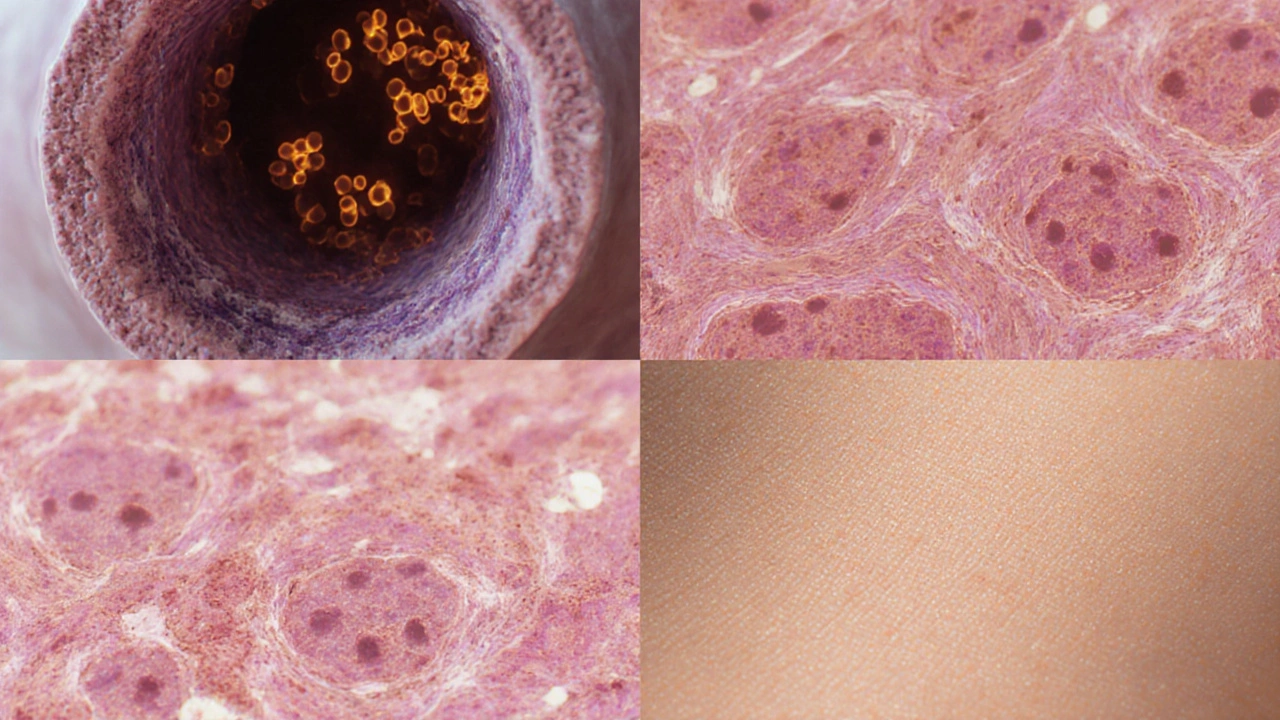Carcinoma – What It Is and Why It Matters
When talking about carcinoma, a malignant tumor that originates in epithelial tissue. Also known as cancer, it spreads by invading nearby cells and can affect any organ. One common form is skin carcinoma, tumors that develop on the skin, usually linked to UV exposure. Another major example is lung carcinoma, cancers that start in lung epithelial cells, often associated with smoking. breast carcinoma, malignancies arising in breast tissue, influenced by hormonal factors are also frequently discussed. Early detection influences carcinoma outcomes, and proper treatment requires a mix of surgery, chemotherapy, or radiation.
Key aspects of carcinoma you should know
First off, carcinoma isn’t a single disease; it’s a broad umbrella covering many organ‑specific cancers. The main attributes are its origin (epithelial cells), its ability to invade, and its potential to metastasize. Because of these traits, doctors rely on imaging, biopsies, and molecular tests to pinpoint the exact subtype. For skin carcinoma, a simple skin check can catch suspicious spots before they spread. Lung carcinoma often needs a chest CT and a tissue sample to confirm. Breast carcinoma screening uses mammograms and sometimes MRI. Knowing the subtype helps decide whether surgery alone will suffice or if chemo‑radiation combos are needed.
Second, lifestyle and environment play a big role. UV rays boost skin carcinoma risk, while tobacco smoke fuels lung carcinoma. Hormone‑related factors, like early menstruation or high‑fat diets, raise breast carcinoma odds. Understanding these links lets you take practical steps: wear sunscreen, quit smoking, maintain a balanced diet, and stay active. Most of the posts on this page dive into prevention tips, early‑sign clues, and how to talk to your doctor about screening.
Third, treatment options have evolved fast. Targeted therapy and immunotherapy now complement traditional surgery and radiation for many carcinoma types. For example, lung carcinoma patients with specific genetic mutations may respond to EGFR inhibitors. Breast carcinoma patients with HER2‑positive tumors often benefit from trastuzumab. Skin carcinoma, especially basal cell types, can sometimes be cleared with topical creams or laser procedures. The articles below break down when each option makes sense and what side‑effects you might expect.
Finally, survivorship matters. Even after successful treatment, follow‑up care is crucial to catch recurrences early. Regular check‑ups, imaging, and lifestyle monitoring are standard. Some of the posts discuss how to manage long‑term side effects, deal with emotional stress, and keep your skin healthy after treatment. Knowing what to expect helps you stay proactive and reduces anxiety.
Below you’ll find a curated collection of articles that cover the full spectrum of carcinoma – from risk factors and early warning signs to detailed treatment guides and survivorship advice. Dive in to get the practical, no‑jargon information you need to make informed health decisions.
Carcinoma: The Cancer Type Behind 90% of Cases
Learn why about 90% of all cancers are carcinomas, the main sub‑types, risk factors, detection methods and prevention tips in clear, high‑impact language.
